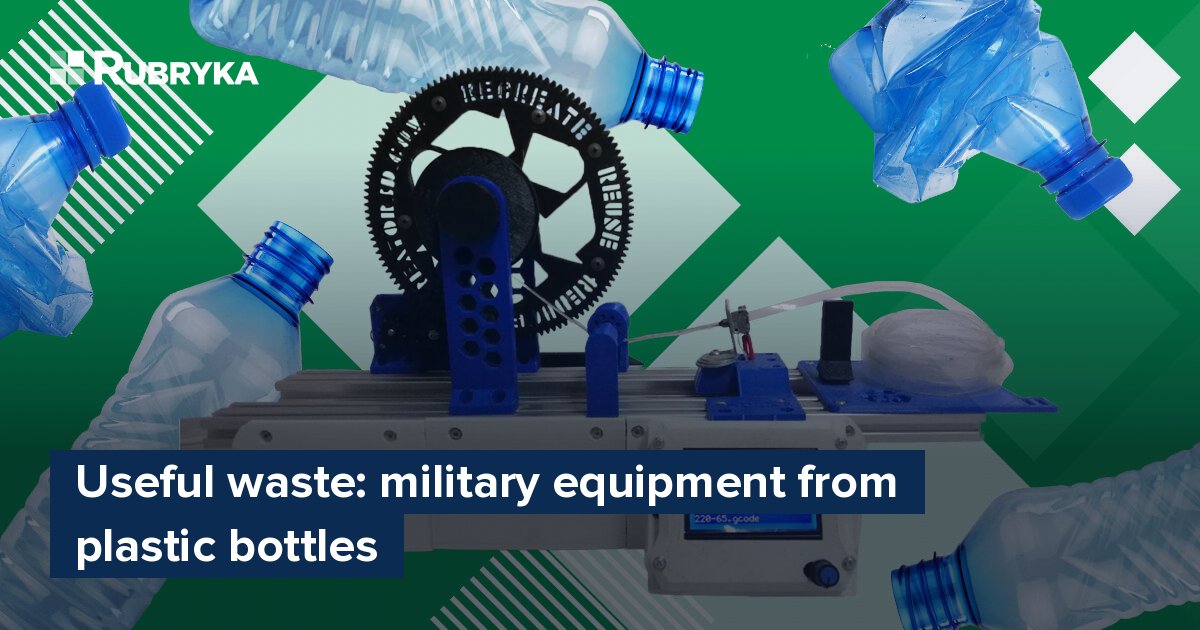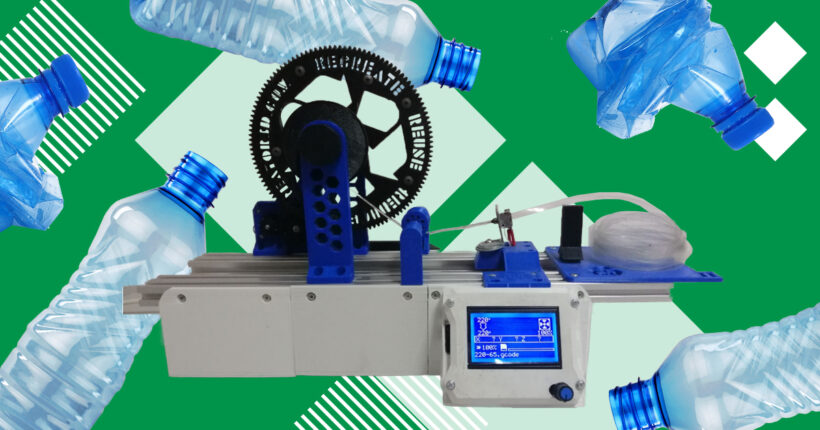
What is the problem?
At the beginning of the full-scale war, everyone volunteered, including those who worked on 3D printers. They printed numerous parts for machine guns and drones for the military. Among them were activists from the Okhtyr Youth Center. However, at a time when almost all production and trade stopped, there was not enough plastic for printing, and there was nowhere to buy it.
What is the solution?
Maxym Dyakov, from Okhtyrka, the Sumy region, decided to make plastic for a 3D printer from plastic bottles. He found a video on YouTube and built the device with his colleagues. Before the full-scale war, he and Radion Dubrovka conducted robotics and programming classes for children.
Dubrovka is the head of the Youth Center in Okhtyrka, and Dyakov is an amateur inventor. As part of one of the projects of the Youth Center, they bought two 3D printers and taught children how to print various things on them. When the war started, they plunged headlong into volunteer activities, collected and transported humanitarian aid, and helped repair houses damaged by shelling. Later, they began to manufacture equipment for the Armed Forces of Ukraine. At first, printing was done on two printers, and when that was not enough, Serhii Prytula, a Ukrainian activist and volunteer, gave the third printer as a gift.
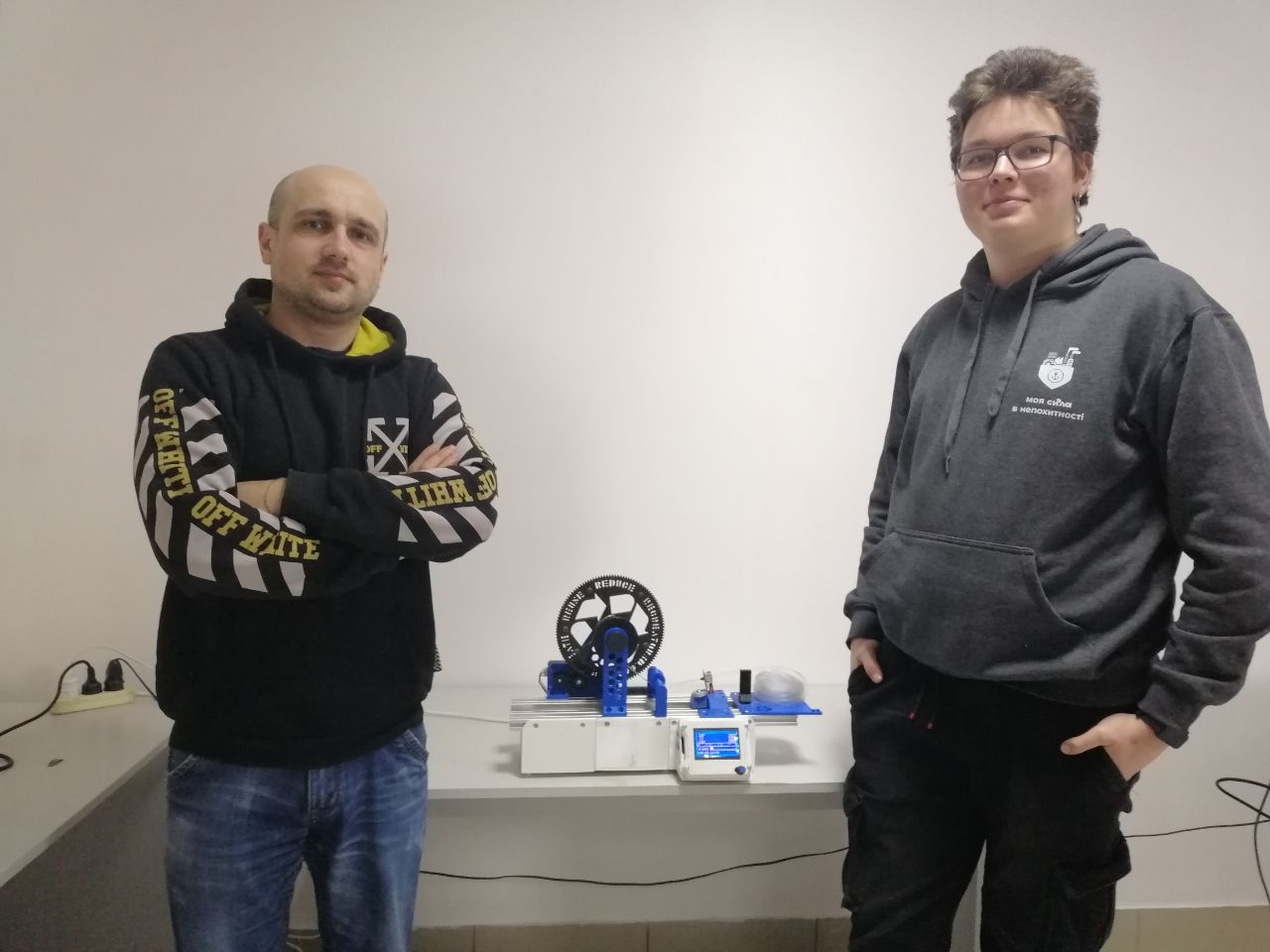
"Once, a military acquaintance approached us," Dyakov recalls. "He asked if it was possible to print something. I didn't even know what it was. I tried, and it worked. And so it began. We printed handles for automatic machines, shanks for drones, etc."
However, plastic was not always enough, and then Dyakov thought about an eco-friendly solution:
"I found a video that showed how to make a machine for processing plastic bottles into filament. The device uses a motor similar to the one used in a 3D printer. Microcircuits and a screen were also needed," Dyakov shares his experience. "We have ordered everything necessary. Some parts were printed on the 3D printer. And together with Artem Dyachenko, we began to assemble the apparatus."
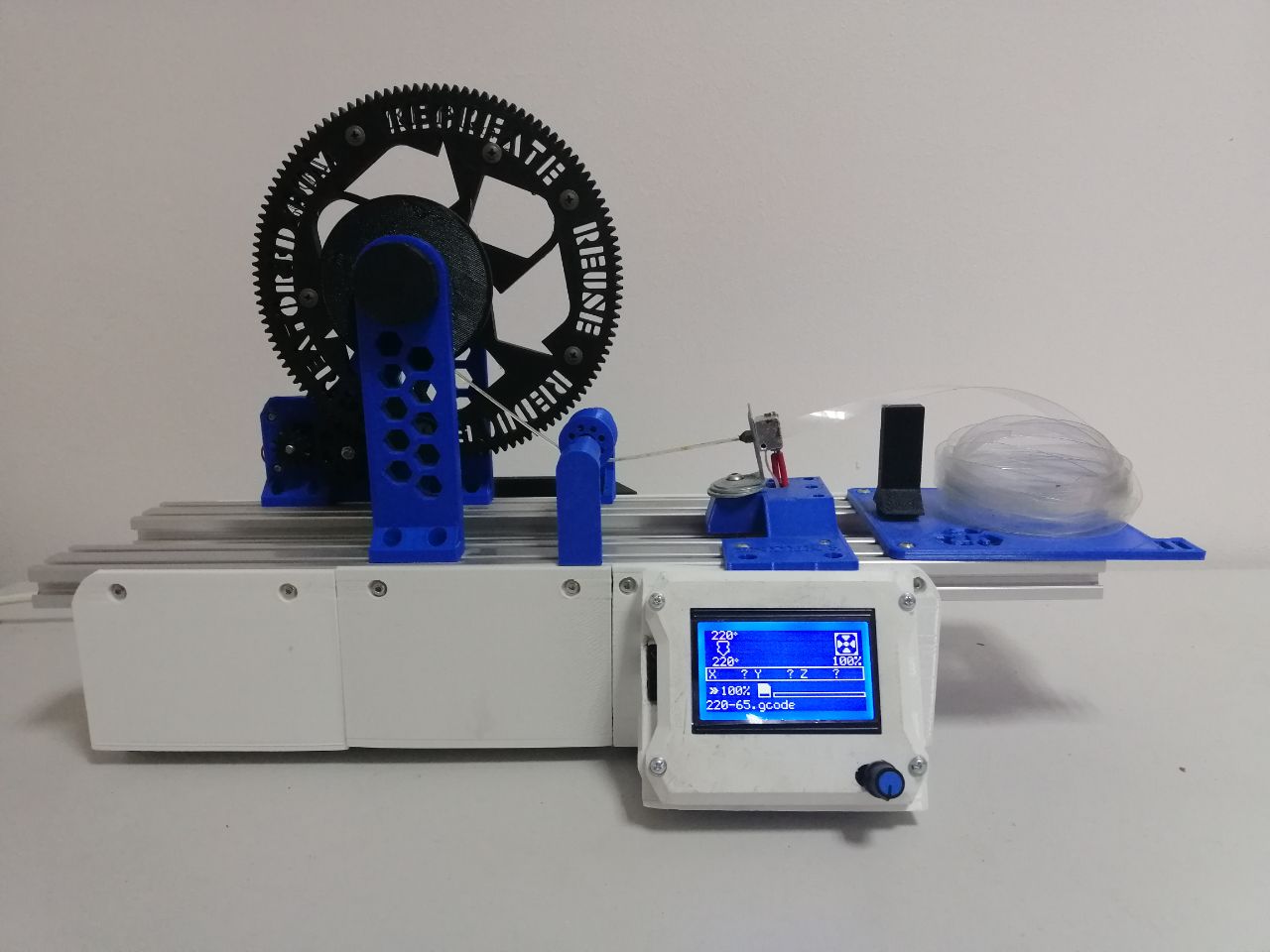
How does it work?
When Dyakov and Dyachenko started making the device, they ordered the components they saw on the video. The inventors say everything one needs can be built even more accessible and cheaper. Parts can be purchased from many stores that sell 3D printers, and the principle of operation is quite simple.
The inventors installed a cutter on the base ordered on the Internet. It can be made even from an ordinary office knife. Dyakov printed the attachment for the blade on a 3D printer. The bottle is cut into an 8mm wide tape, then passes through a heater, and a ready-made filament is wound on a coil, which can be used for printing.
Depending on the volume, 5 to 10 meters of plastic can be produced from one bottle. According to Dyakov, any bottles can be used, but it is preferable to choose thin ones. He worked with soda bottles. One two-liter bottle melts in about an hour, leaving only the bottom and neck. Two shanks for a drone come out of a remelted two-liter bottle.
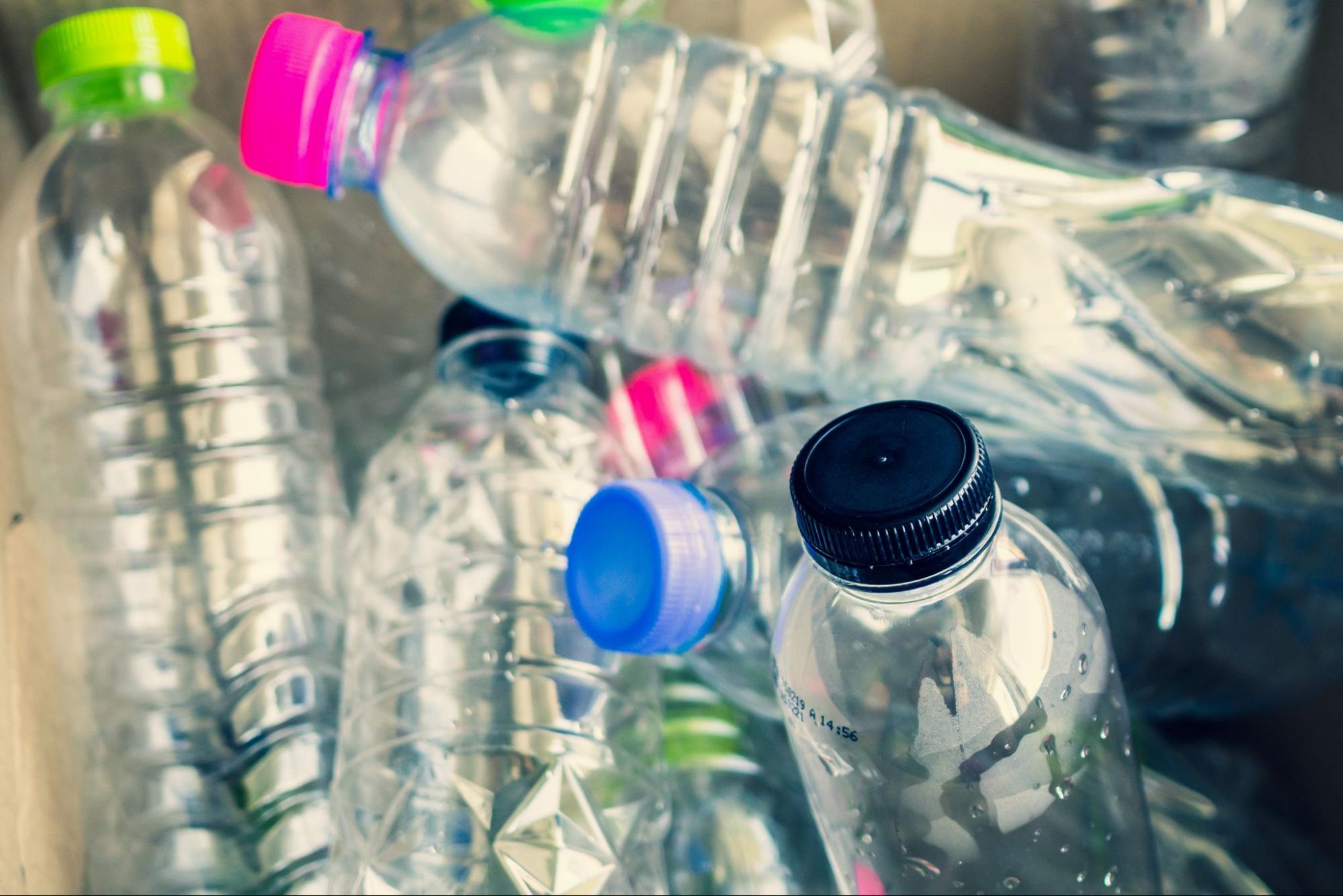
"We tried to print different key chains, a cup for the winners of the computer game competition, and, of course, drone shanks from this plastic," says Dyakov. "Plastic made from bottles was even better for these purposes than store-bought because it is more flexible."
The device, designed by Dyakov and Dyachenko, is already working. All that remains is installing a stand for the bottle so that cutting occurs automatically, since before that, the guys cut the bottles by hand.
The printing process must be supervised because the filament can break. Also, according to Dyakov, this plastic is unsuitable for a 3D pen because the heating temperature in it is 210 Celsius, and in the printer — 260. This is the temperature required to melt the filament from the bottles.
Does it really work?
Similar devices for processing plastic bottles into filaments can be bought or assembled from scratch. The finished instrument will cost about $400, and if you buy only the parts, it will cost $80-100.
"Then we saw what parts we needed and immediately bought them. More and more advanced electronics are appearing nowadays, so it is much easier to make such a device. You don't even need a computer here. After all, the speed and temperature regulator is adjusted manually," the inventors explain. "We spent about $40 on electronics, another $12 on the engine, plus a profile, all sorts of screws, etc."

The youth center in Okhtyrka, where Dyakov works, aims to educate children and young people. They constantly participate in various international programs and plan to make repairs in the workshop. There they can teach children, including working with plastic, 3D printers, and other tools so that the younger generation can understand how to make such a device and make what they want from plastic.
Even more useful solutions!
Making filament from plastic bottles is not a new idea. This technology is used in other countries. There are step-by-step instructions and videos online.
Fittings are made from plastic bottles by twisting and heating a thin bottle strip with a construction dryer. You can also make toys, furniture, and chain link. Dyakov has a solution even for recycling the bottles' leftovers — necks and bottoms: "I saw a video that you could make pavement tiles from these leftovers. Just remelt it on fire, add fine sand, and you will get a wonderful tile."
American startup Azure Printed Homes prints real houses from recycled plastic. Modular shells are created with the help of 3D printers. A studio house requires 100,000 plastic bottles. In monetary terms, this is approximately $40,000, while an ordinary home of the same size costs $150,000. One house can be printed in three days. First, they make a complete frame of walls, floor, and roof at the factory, prepare everything for connecting communications, then take it to the site and finish the work.


